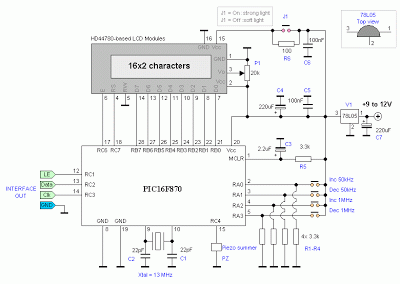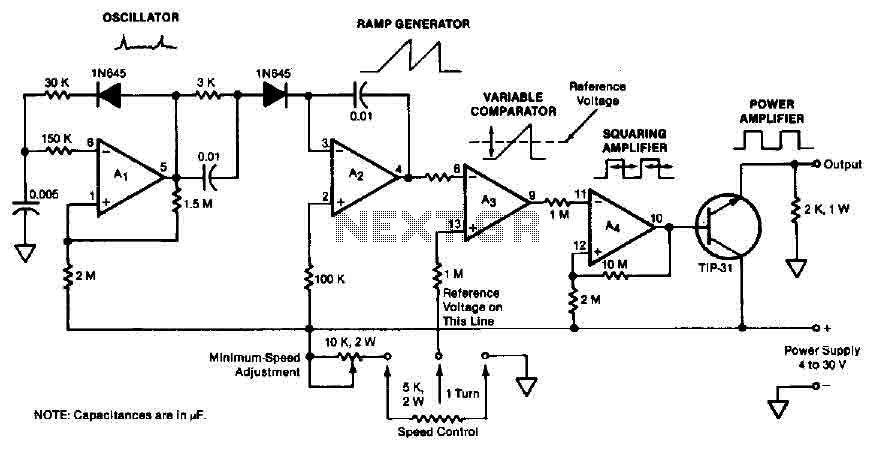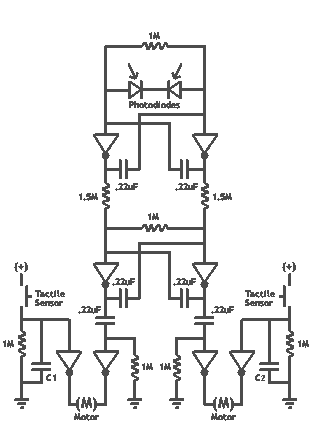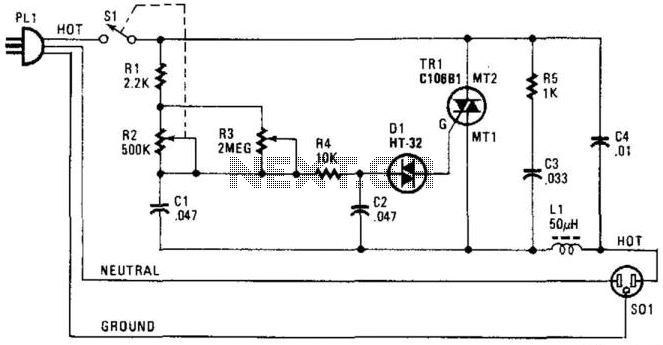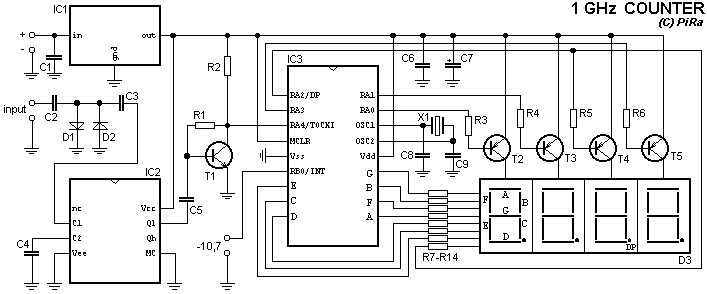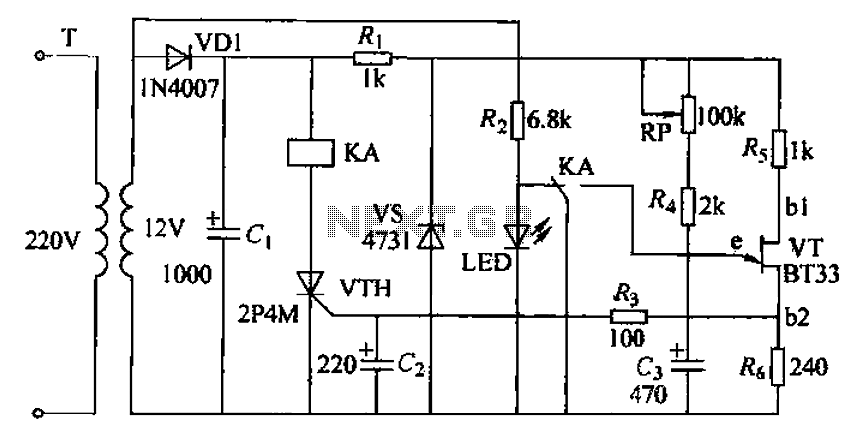
SING AROUND COUNTER CONTROL
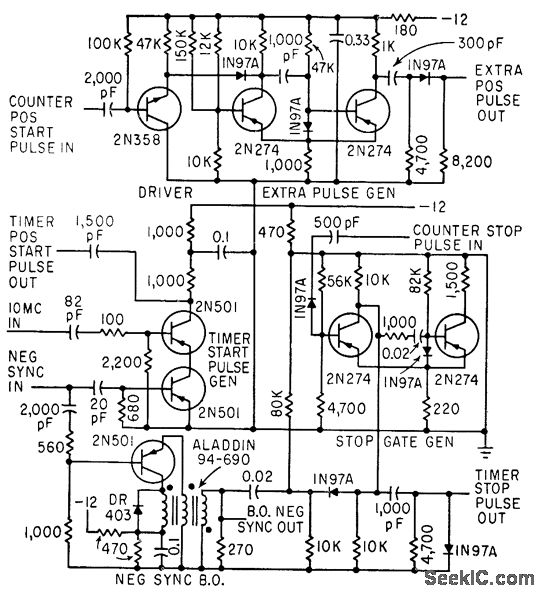
The timer start-pulse generator is a fast series-transistor coincidence circuit. The slope-gate generator is a one-shot multivibrator that prevents the 1N97A diode from passing the blocking oscillator's negative sync pulse until the multivibrator fires. This circuit is utilized to count the number of sing-around cycles and measure the total time in the system for measuring ultrasonic velocity in liquids and solids.
The timer start-pulse generator circuit employs a series of transistors configured to achieve a high-speed coincidence detection. In this configuration, the transistors are arranged to process input signals and generate a precise timing pulse that initiates the operation of subsequent stages in the system. The use of a fast series-transistor arrangement ensures minimal delay, allowing for accurate timing in applications that require rapid signal processing.
The slope-gate generator functions as a one-shot multivibrator, which is crucial for managing the control of the 1N97A diode. This diode plays a vital role in blocking unwanted negative sync pulses generated by the blocking oscillator. The multivibrator is designed to trigger only under specific conditions, thereby preventing erroneous signal transmission that could compromise measurement accuracy.
In the context of ultrasonic velocity measurements, the circuit counts sing-around cycles, which are essential for determining the time it takes for ultrasonic waves to travel through a medium. This measurement is critical for applications in both liquids and solids, where precise velocity data is necessary for various industrial and scientific purposes. By integrating this timer start-pulse generator with other components in an ultrasonic measurement system, it enhances the overall performance and reliability of velocity assessments, ensuring that the data collected is both accurate and repeatable.Timer start-pulse generator is fast series-transistor coincidence circuit. Slop-gate generator is one-shot mvbr that prevents 1N97A diode from passing blocking oscillator negative sync pulse until mvbr fires. Used to count number of sing-around cycles and measure total time in system for measuring ultrasonic velocity in liquids and solids.
-R. L. F orgacs, Precision Ultrasonic Velocity Measurements, Electronics, 33:47, p 98-100. 🔗 External reference
The timer start-pulse generator circuit employs a series of transistors configured to achieve a high-speed coincidence detection. In this configuration, the transistors are arranged to process input signals and generate a precise timing pulse that initiates the operation of subsequent stages in the system. The use of a fast series-transistor arrangement ensures minimal delay, allowing for accurate timing in applications that require rapid signal processing.
The slope-gate generator functions as a one-shot multivibrator, which is crucial for managing the control of the 1N97A diode. This diode plays a vital role in blocking unwanted negative sync pulses generated by the blocking oscillator. The multivibrator is designed to trigger only under specific conditions, thereby preventing erroneous signal transmission that could compromise measurement accuracy.
In the context of ultrasonic velocity measurements, the circuit counts sing-around cycles, which are essential for determining the time it takes for ultrasonic waves to travel through a medium. This measurement is critical for applications in both liquids and solids, where precise velocity data is necessary for various industrial and scientific purposes. By integrating this timer start-pulse generator with other components in an ultrasonic measurement system, it enhances the overall performance and reliability of velocity assessments, ensuring that the data collected is both accurate and repeatable.Timer start-pulse generator is fast series-transistor coincidence circuit. Slop-gate generator is one-shot mvbr that prevents 1N97A diode from passing blocking oscillator negative sync pulse until mvbr fires. Used to count number of sing-around cycles and measure total time in system for measuring ultrasonic velocity in liquids and solids.
-R. L. F orgacs, Precision Ultrasonic Velocity Measurements, Electronics, 33:47, p 98-100. 🔗 External reference
